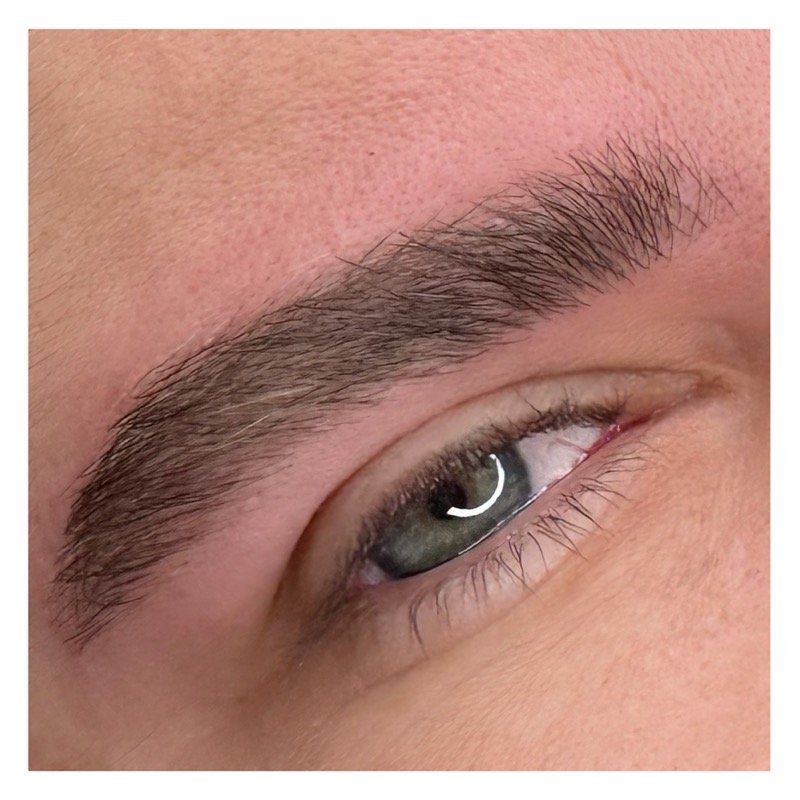What You Need to Know about Nanoblading
What You Need to Know About Nanoblanding: Nanoblanding is a micropigmentation technique that is gaining popularity around the world. This technique involves applying pigments to the skin with ultra-thin needles, creating much more delicate and natural strokes than those obtained with other micropigmentation techniques.
Nanoblanding is especially recommended for people who want to fill in gaps in their eyebrows but prefer a more subtle and natural result compared to traditional micropigmentation. Additionally, this technique can also be used to correct asymmetries in the eyebrows.
However, it is important to emphasize that nanoblanding is a technique that requires skill and experience from the professional performing it. Therefore, it is essential to choose a trusted micropigmentation specialist and verify if they have the necessary certifications and experience to perform the technique safely and efficiently.
Basics of Nanobiotechnology
Definition of Nanobiotechnology Nanobiotechnology is a field of research that combines biotechnology with nanotechnology. It focuses on developing materials and devices on a nanometric scale for applications in various fields such as medicine, agriculture, and the environment, among others.
Nanobiotechnology involves the study and manipulation of materials at the nanometric scale, which means on a scale so small that the physical and chemical properties of materials are different from their macroscopic counterparts. This allows materials to have unique properties and be used to develop innovative products and devices.
Importance and Applications Nanobiotechnology has great potential to revolutionize several areas, from medicine to agriculture. In medicine, for example, nanobiotechnology can be used to develop new treatments for diseases like cancer by delivering medications directly to cancer cells. Additionally, it can be used to develop materials for prostheses and implants that are more durable and resistant than those currently in use.
In agriculture, nanobiotechnology can be used to develop more efficient fertilizers and pesticides that are less harmful to the environment. Furthermore, it can help develop plants that are more resistant to diseases and pests, increasing food production and reducing the use of chemical products.
In summary, nanobiotechnology is a promising field of research with great potential to develop innovative products and devices in various areas.
Nanoblanding Process The nanoblanding process is a technique used to fill and define eyebrows by depositing pigments into the dermis on a microscopic scale. This technique is carried out with the help of specific tools, such as ultra-thin needles and high-precision dermographs.
Nano-scale Manipulation Techniques Nano-scale manipulation is a technique that requires skill and precision. During the nanoblanding process, the professional uses ultra-thin needles to deposit pigments into the dermis on a microscopic scale. These needles are inserted into the skin at a specific angle and with controlled depth, ensuring a natural and long-lasting result.
Materials and Tools Used To perform the nanoblanding process, it is necessary to use high-quality and safe materials and tools. Among the materials used are organic and hypoallergenic pigments, which are chosen according to the client’s skin tone and hair color. The tools include high-precision dermographs and disposable ultra-thin needles, ensuring the safety and hygiene of the procedure.
The nanoblanding process is a safe and effective technique for those who wish to fill and define their eyebrows in a natural and long-lasting way. By using high-quality materials and precision tools, it is possible to achieve satisfactory results and ensure client satisfaction.
Impact and Ethical Considerations
Health and Environmental Impacts Nanoblanding is a relatively new technique in the beauty industry, so there are few studies on its impacts on health and the environment. However, it is important to consider that nanoblanding involves injecting pigments into the skin, which may cause allergic reactions. Additionally, removing these pigments can be difficult and painful, which may lead to scarring and other skin problems.
As for the environment, not much is known about the impacts of nanoblanding yet. However, it is important to remember that the pigments used in the technique can be toxic and harmful to the environment if not disposed of properly.
Regulations and Safety Nanoblanding is a technique that involves injecting pigments into the skin, which can be dangerous if not done correctly. Therefore, it is important that professionals performing the technique have adequate training and follow safety regulations.
In the United States, each state is responsible for regulating micropigmentation procedures. In Brazil, the National Health Surveillance Agency (ANVISA) is responsible for regulating nanoblanding and other micropigmentation techniques. It is important that professionals performing the technique are registered with ANVISA and follow safety regulations to ensure the safety of patients.
In summary, although nanoblanding can be an effective technique for improving the appearance of the skin, it is important to consider the health and environmental impacts, as well as follow safety regulations to ensure patient safety.

